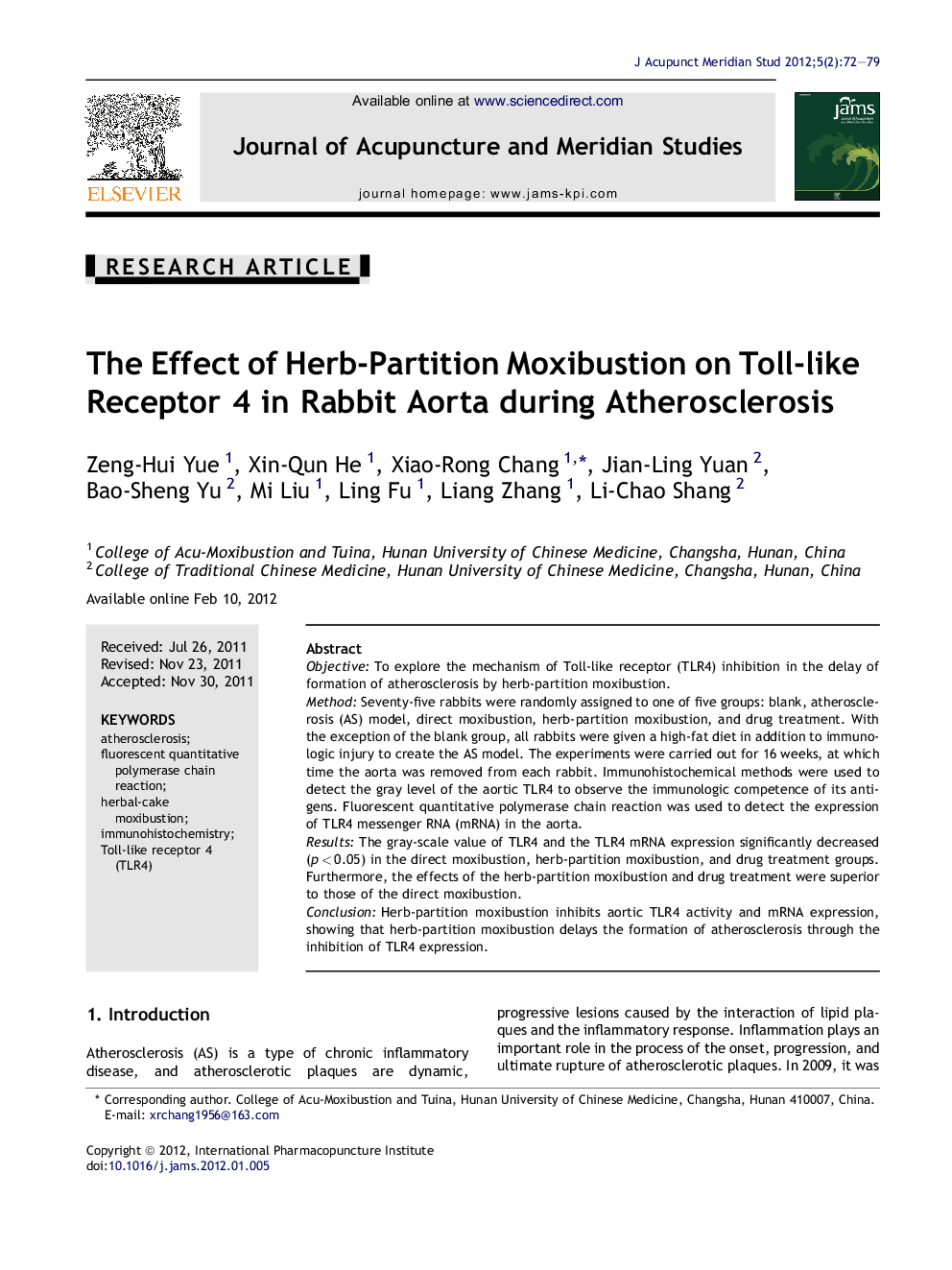| Article ID | Journal | Published Year | Pages | File Type |
|---|---|---|---|---|
| 3098779 | Journal of Acupuncture and Meridian Studies | 2012 | 8 Pages |
ObjectiveTo explore the mechanism of Toll-like receptor (TLR4) inhibition in the delay of formation of atherosclerosis by herb-partition moxibustion.MethodSeventy-five rabbits were randomly assigned to one of five groups: blank, atherosclerosis (AS) model, direct moxibustion, herb-partition moxibustion, and drug treatment. With the exception of the blank group, all rabbits were given a high-fat diet in addition to immunologic injury to create the AS model. The experiments were carried out for 16 weeks, at which time the aorta was removed from each rabbit. Immunohistochemical methods were used to detect the gray level of the aortic TLR4 to observe the immunologic competence of its antigens. Fluorescent quantitative polymerase chain reaction was used to detect the expression of TLR4 messenger RNA (mRNA) in the aorta.ResultsThe gray-scale value of TLR4 and the TLR4 mRNA expression significantly decreased (p < 0.05) in the direct moxibustion, herb-partition moxibustion, and drug treatment groups. Furthermore, the effects of the herb-partition moxibustion and drug treatment were superior to those of the direct moxibustion.ConclusionHerb-partition moxibustion inhibits aortic TLR4 activity and mRNA expression, showing that herb-partition moxibustion delays the formation of atherosclerosis through the inhibition of TLR4 expression.
